Tensorflow Graph Executor(草稿)
摘要
Tensorflow中单机版的(direct session)会按照device将graph先划分成子图subgraph, 然后每个subgraph会交给一个execturo去执行,分布式的(GrpSession) 首先会将graph按照worker划分,每个worker划分成一个子图,然后注册到每个worker的graph_mgr, 并在graph_mgr中再按照device将worker_subgraph划分成device的subgraph, 最后每个device对应的subgraph会由executor去执行,Tensorflow中的graph执行示意图如下(图片来自tensorflow-talk-debugging)。
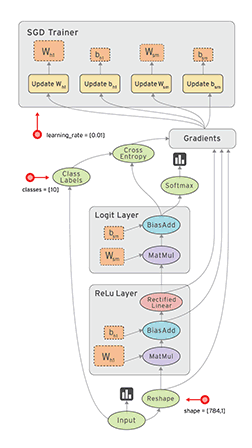
本文主要分析了executor在执行graph时,Node的执行调度以及node的输入输出数据, 执行状态是如何保存的,最后结合代码和Tensorflow control flow implemention这部分文档分析了的control flow的具体实现。主要涉及的代码为common_runtime/executor.cc
Executor中主要类
Executor
Executor为基类,对外提供了两个接口Run和RunAsync, 其中Run是对RunAsync简单的一层包装。
// Synchronous wrapper for RunAsync().
Status Run(const Args& args) {
Status ret;
Notification n;
RunAsync(args, [&ret, &n](const Status& s) {
ret = s;
n.Notify();
});
n.WaitForNotification();
return ret;
}
Executor基类只要去实现RunAsync就行。
virtual void RunAsync(const Args& args, DoneCallback done) = 0;
ExecutorImpl
ExecutorImpl继承实现了Executor,它的RunAsync实现转发给了ExecutorState::RunAsync, ExecutorImpl主要的工作是从Graph中解析出一些静态信息,比如FrameInfo, GraphView, 由后面的ExecutorState执行的时候使用。
void ExecutorImpl::RunAsync(const Args& args, DoneCallback done) {
(new ExecutorState(args, this))->RunAsync(std::move(done));
}
ExecutorState
Executor中的调用关系
ExecutorImpl call flow
Executor被调用的入口为NewLocalExecutor, 在DirectSesion中会为每个subgraph创建一个executor, 然后交给ExecutorBarrier同时执行多个Executor。NewLocalExecutor在ExecutorImpl成员函数中的调用过程如下:
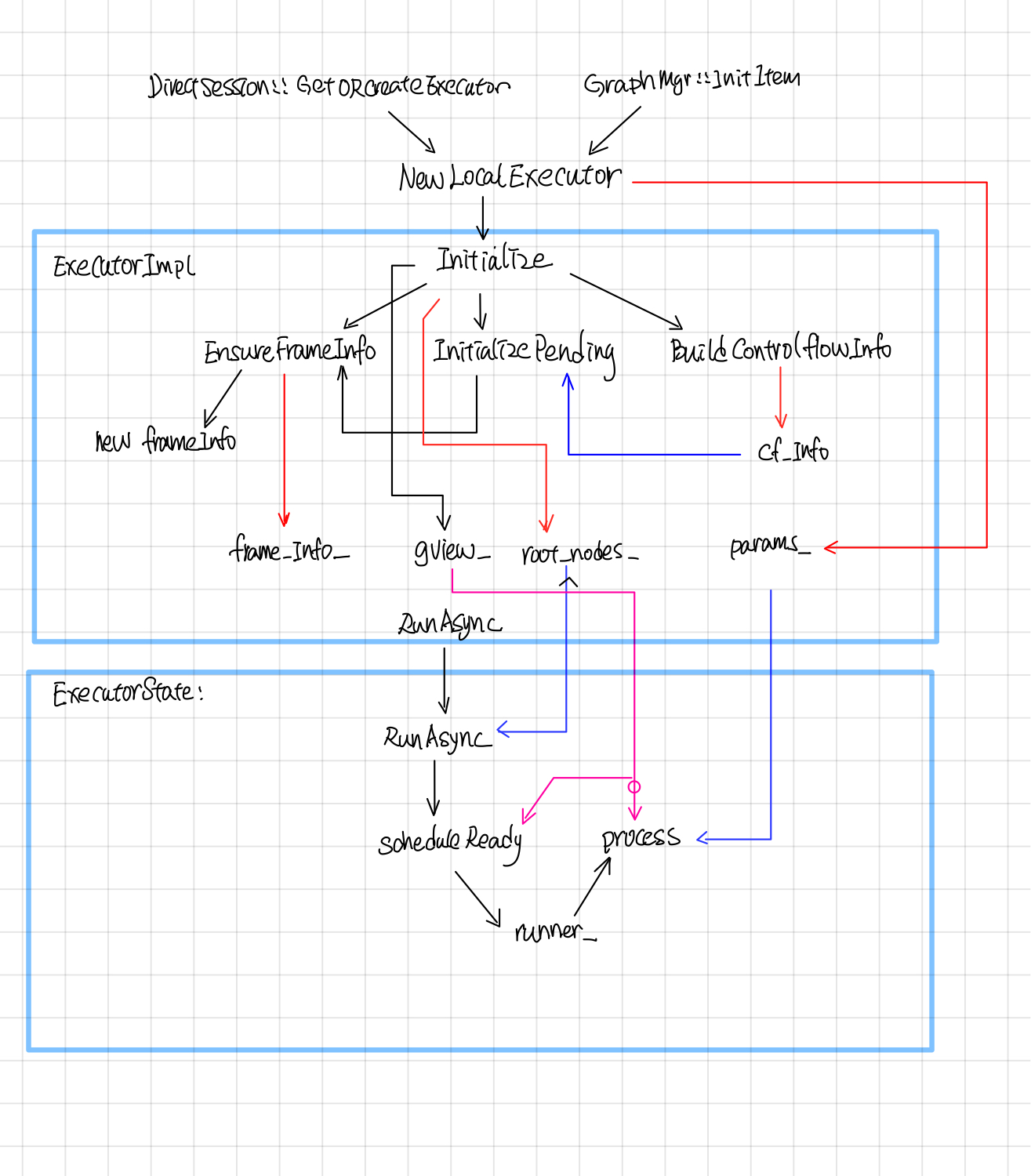
Exector::RunAsync这个会被转发给ExecutorState::RunAsync(这个函数的执行逻辑见下文)
ExecutorImpl::Initialize
在ExecutorImpl::Initialize中,对于graph中的每个node, 创建对应的NodeItem, 主要包含了三块:
- 调用params.create_kernal, 创建nodeItem->kernal.
- 记录nodeItem.input_start, input_start 是该node在它所属frame的input_tensors中的偏移index, 这个在后面的ProcessInputs和ProcessOutputs中会用到。
- 创建node对应的pending_id, pending_id用于找到记录它执行状态的pendingCount, 这个在后面的ActiveNode中会用到.
在BuildCtronlFlow中会建立好framename之间的父子关系, frameInfo是frame的静态信息(对应着执行时候的FrameState动态信息),并且建立了从node id找到node所属frame name的映射关系,包含了frame中的total inputs, 这个frame所包含的node.
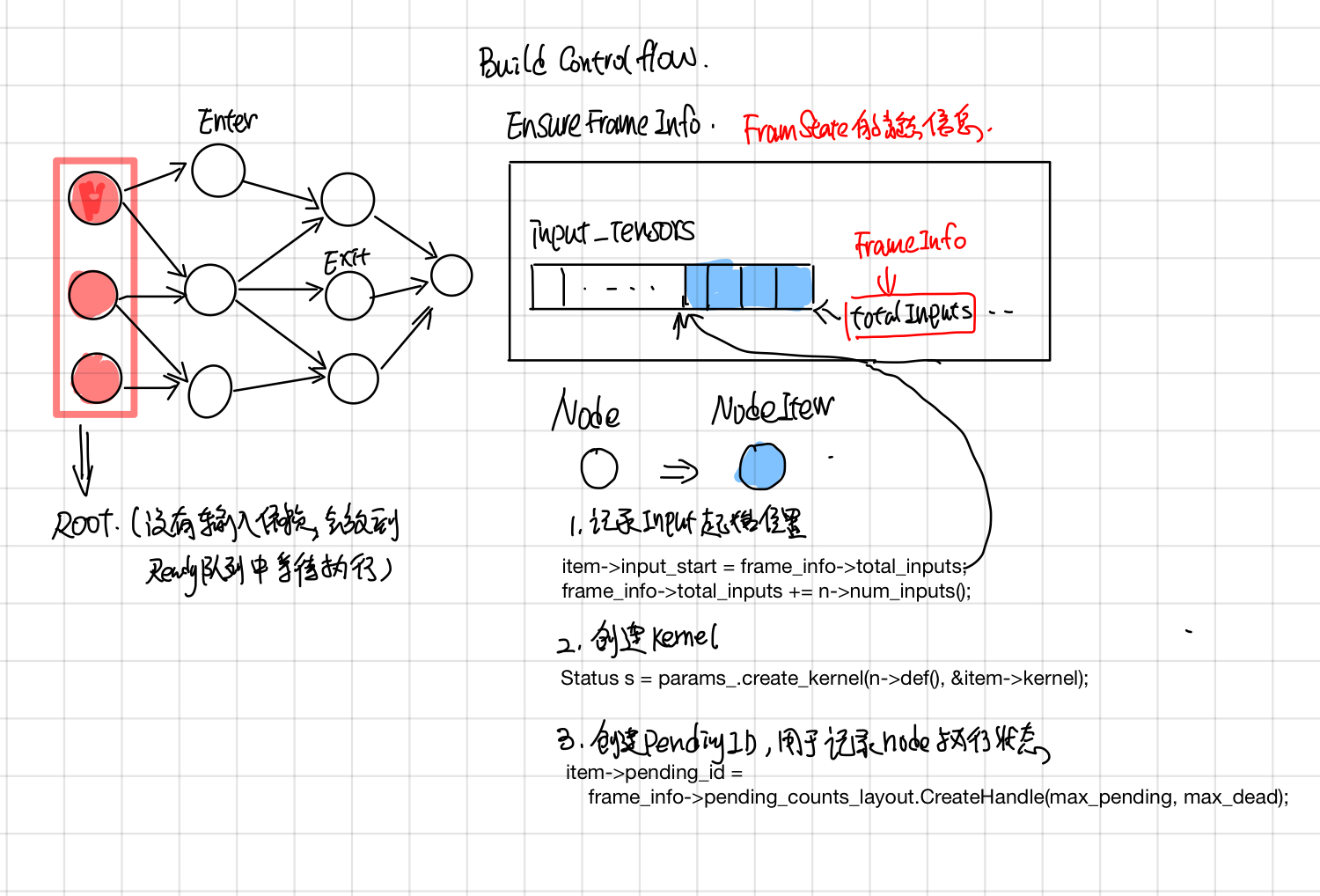
ExecutorState::RunAsync
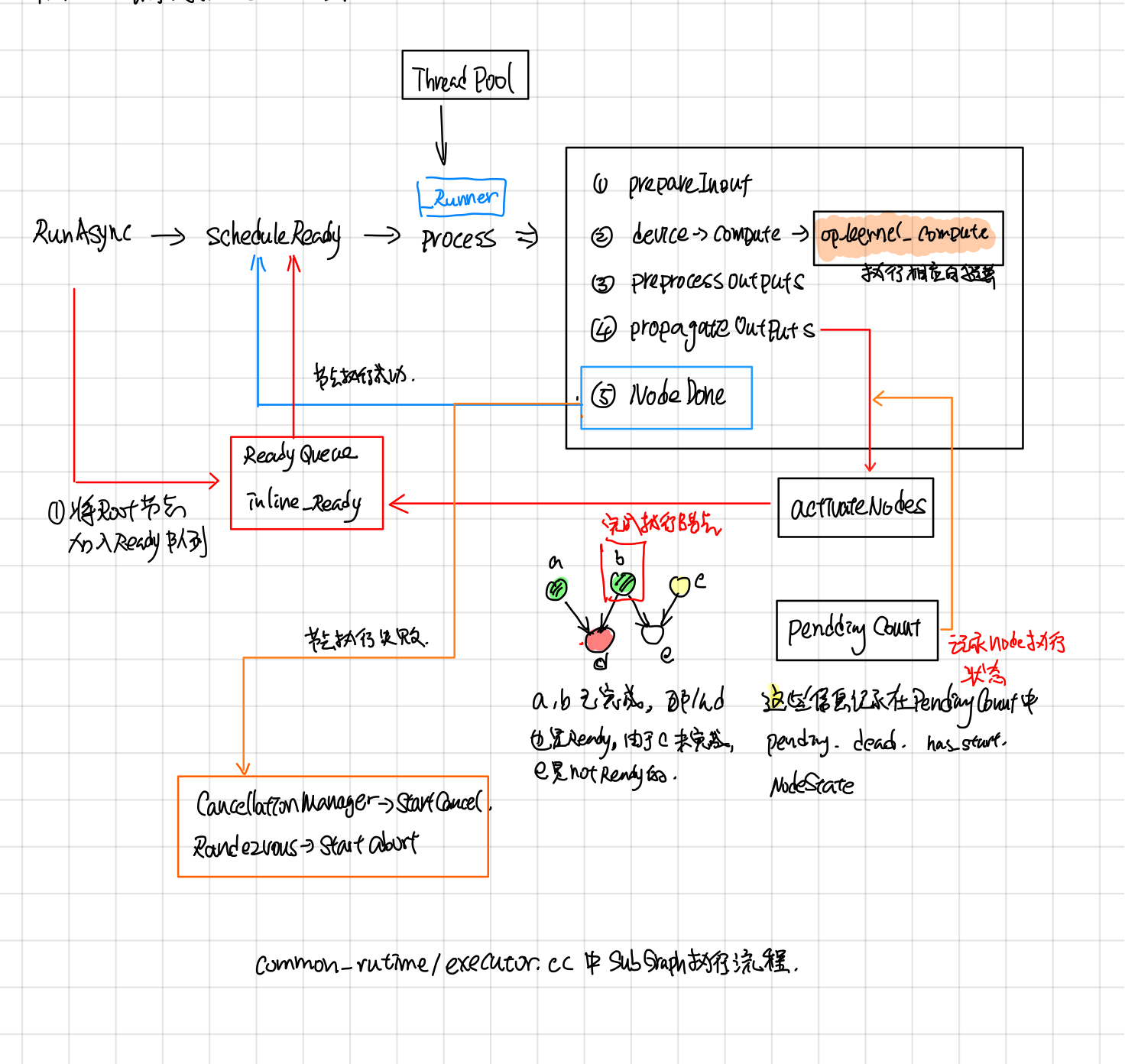
ExecutorImpl::Process
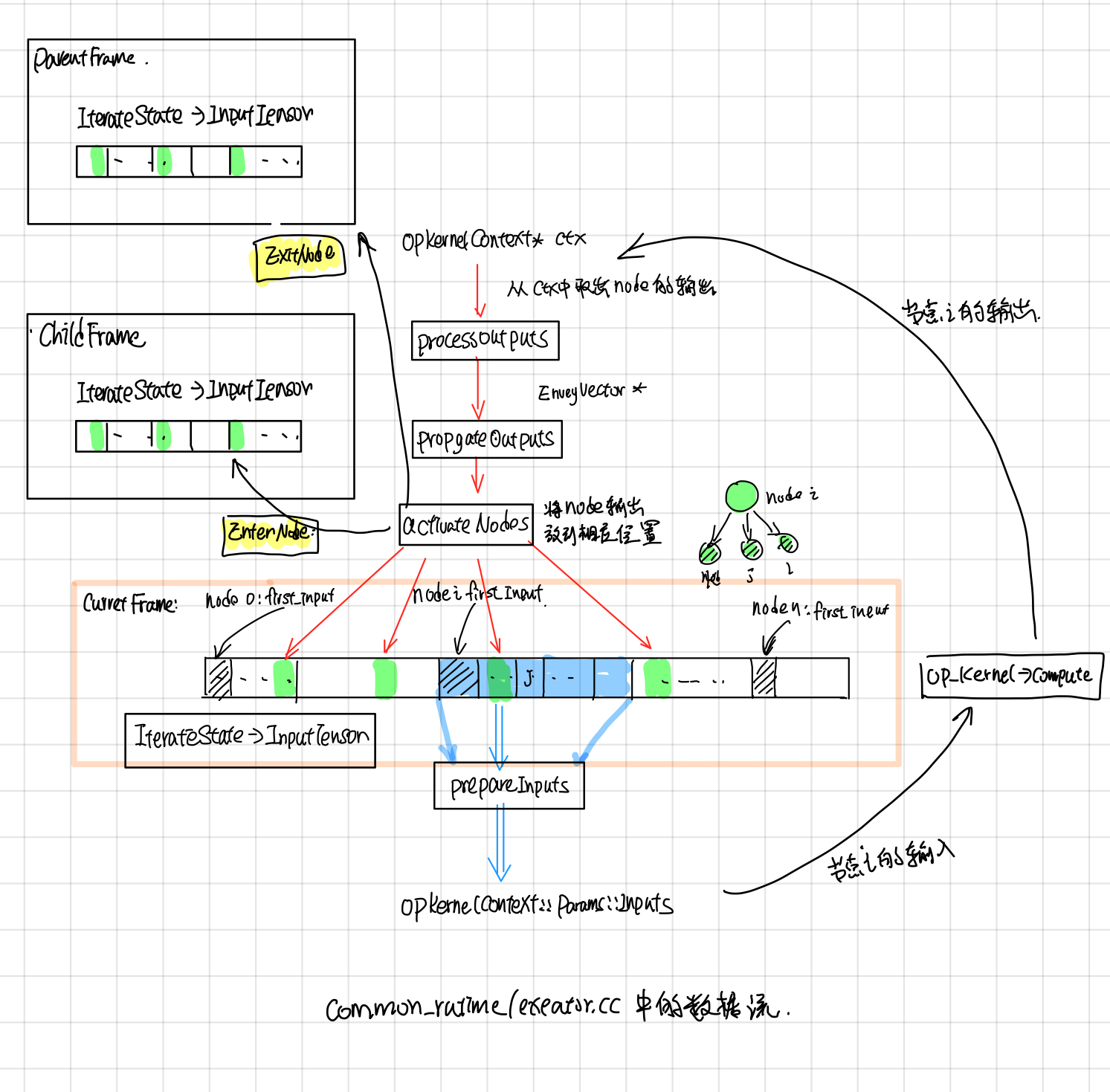
Control Flow
后来在[1]中发现节点还有Switch, Merge, IterNext, Enter, Exit 五个flow control node,用来实现while循环,为此tensorflowe引入了frame的概念,可以粗略的认为和函数调用一样吧, 在遇到Enter node的时候,就新建一个child frame,把inputs(类似于函数函数调用时候参数入栈)一样,forward到child frame中,在遇到Exit node,就把输出放到parent frame 中(类似于将函数的return值入栈)。
未完待续
Executor中数据流程
参考
- [Tensorflow control flow implemention]
- tensorflow-talk-debugging